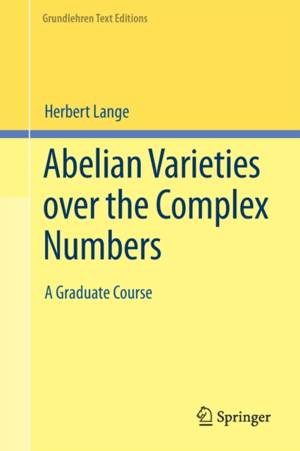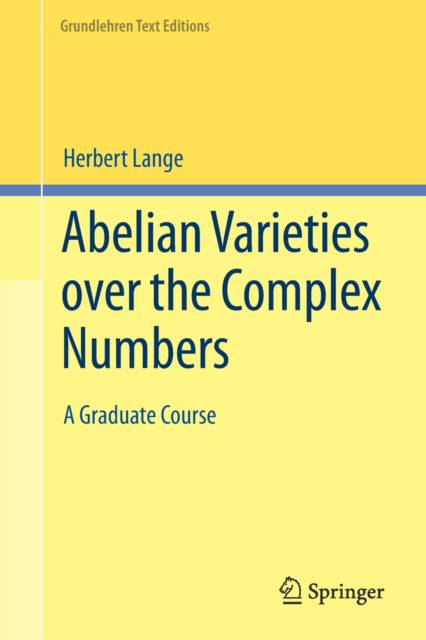
- Afhalen na 1 uur in een winkel met voorraad
- Gratis thuislevering in België vanaf € 30
- Ruim aanbod met 7 miljoen producten
- Afhalen na 1 uur in een winkel met voorraad
- Gratis thuislevering in België vanaf € 30
- Ruim aanbod met 7 miljoen producten
Zoeken
€ 91,95
+ 183 punten
Uitvoering
Omschrijving
This textbook offers an introduction to abelian varieties, a rich topic of central importance to algebraic geometry. The emphasis is on geometric constructions over the complex numbers, notably the construction of important classes of abelian varieties and their algebraic cycles.
The book begins with complex tori and their line bundles (theta functions), naturally leading to the definition of abelian varieties. After establishing basic properties, the moduli space of abelian varieties is introduced and studied. The next chapters are devoted to the study of the main examples of abelian varieties: Jacobian varieties, abelian surfaces, Albanese and Picard varieties, Prym varieties, and intermediate Jacobians. Subsequently, the Fourier-Mukai transform is introduced and applied to the study of sheaves, and results on Chow groups and the Hodge conjecture are obtained.
This book is suitable for use as the main text for a first course on abelian varieties, for instance as a second graduate course in algebraic geometry. The variety of topics and abundant exercises also make it well suited to reading courses. The book provides an accessible reference, not only for students specializing in algebraic geometry but also in related subjects such as number theory, cryptography, mathematical physics, and integrable systems.
The book begins with complex tori and their line bundles (theta functions), naturally leading to the definition of abelian varieties. After establishing basic properties, the moduli space of abelian varieties is introduced and studied. The next chapters are devoted to the study of the main examples of abelian varieties: Jacobian varieties, abelian surfaces, Albanese and Picard varieties, Prym varieties, and intermediate Jacobians. Subsequently, the Fourier-Mukai transform is introduced and applied to the study of sheaves, and results on Chow groups and the Hodge conjecture are obtained.
This book is suitable for use as the main text for a first course on abelian varieties, for instance as a second graduate course in algebraic geometry. The variety of topics and abundant exercises also make it well suited to reading courses. The book provides an accessible reference, not only for students specializing in algebraic geometry but also in related subjects such as number theory, cryptography, mathematical physics, and integrable systems.
Specificaties
Betrokkenen
- Auteur(s):
- Uitgeverij:
Inhoud
- Aantal bladzijden:
- 384
- Taal:
- Engels
- Reeks:
Eigenschappen
- Productcode (EAN):
- 9783031255694
- Verschijningsdatum:
- 16/03/2023
- Uitvoering:
- Paperback
- Formaat:
- Trade paperback (VS)
- Afmetingen:
- 156 mm x 234 mm
- Gewicht:
- 553 g

Alleen bij Standaard Boekhandel
+ 183 punten op je klantenkaart van Standaard Boekhandel
Beoordelingen
We publiceren alleen reviews die voldoen aan de voorwaarden voor reviews. Bekijk onze voorwaarden voor reviews.








